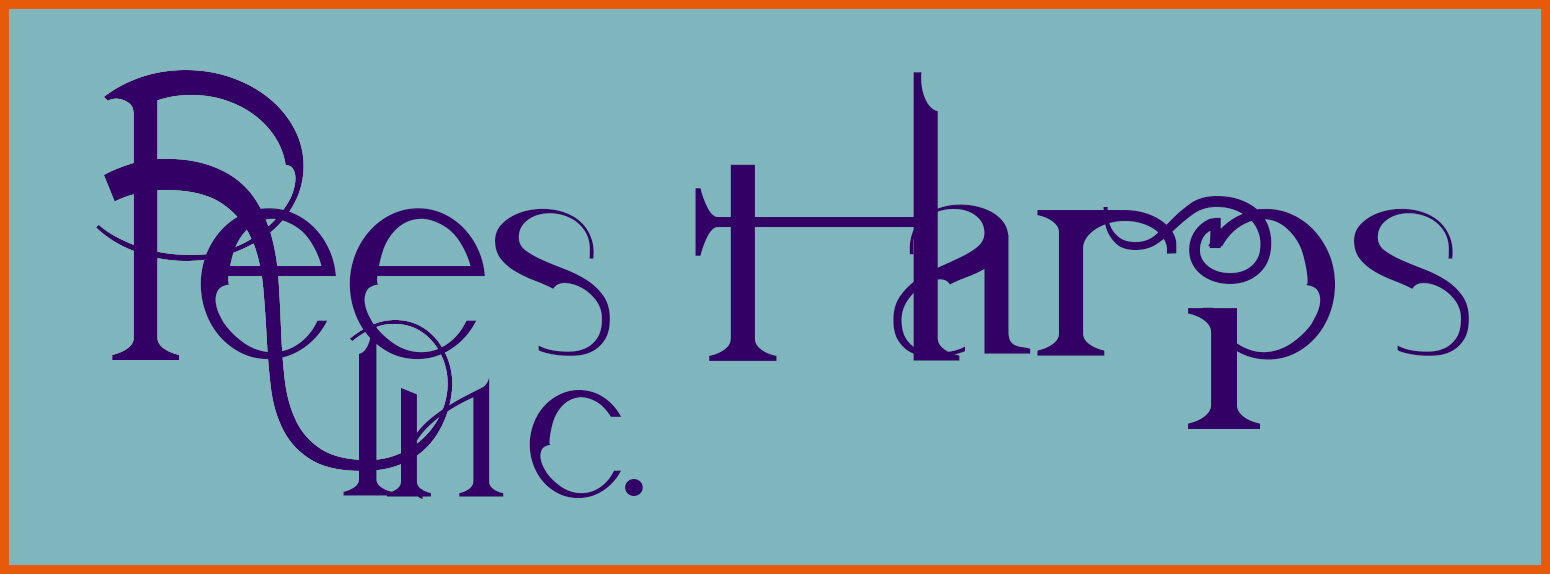Flat vs Staved or Round Backs
At Rees we have a parallel-plano back on all of our harps and we do this for very specific reasons. A flat (plano) back interacts with the soundboard more freely. A parallel back ensures that the bass tones coming from your harp are more likely to project with substantial volume. Together these two design elements are fundamental to the voice of any Rees harp.
Air and Harps
In virtually all stringed instruments, the back and soundboard are meant to work together to generate the voice. The harp soundboard is activated when a string is plucked. Those vibrations move both the air in front of the soundboard and the air inside the harp. Remember that it is the air moving off the front of the soundboard which is pushing the air against your eardrum. That is what you are hearing.
As the soundboard rises when it is vibrating, air flows into the harp through the access holes. As the soundboard falls some of that air is compressed against the back of the harp which increases the movement of the back. When the back rises and falls it too pushes air both forward and back. Air which the back forces forward serves to drive the soundboard more and adds both complexity and depth to the voice of the harp. The interaction between the soundboard and the back of the instrument plays a vital role in shaping the voice.
A Rees Shaylee Meadows Concert Line Harp, in cherry and walnut, with a Rees parallel-plano back.
Why Plano Harp Backs?
An arch is a mechanically stronger structure than a plane. That’s a basic principle of engineering. In the case of a harp this means that, all other things being equal, it takes a greater amount of force/frequency to generate movement in an arched surface than in a flat (plano) one. A flat back can be activated by a string more efficiently, yielding potentially greater sensitivity than the same force applied to a rounded back. Staved backs, for slightly more complex reasons, also suffer from diminished sensitivity to interaction with the soundboard.
Think about it in terms of other instruments with which you are familiar, like the Ovation guitar or a Neapolitan ('taterbug) mandolin. Ovation has marketed themselves extremely well but, with rare exceptions, players, performers and builders agree that the Ovation sound is heavily mid-range. Usually, it is the sound of an excellent piece of soundboard wood bouncing off of plastic. It tends to lack the subtleties and harmonics that are the trademarks of fine guitars. This is not to say that there are not lots of folks who enjoy the Ovation sound. It is to say, however, that no one would confuse the voice of a Martin or Taylor, a Santa Cruz or a Somogyi for an Ovation. The same is true of the Neapolitan mandolins. When Gibson introduced their mandolin, which had only a slight arch in the back, the original little bowl backs were blown out of the market by the larger, richer, brighter Gibson voice.
William is a scientist and came to harps as a classical luthier (See Our Story) so it is always our tendency to approach our designs from a combined perspective of art and science. Because we understand the physics, Rees harps will always have flat backs.
Why Parallel Harp Backs?
Have you ever looked at stereo speakers? If you have you know that the tweeter speaker (the speaker optimized for high frequencies) is small while the woofer (the speaker optimized for bass frequencies) is much larger. This is because the human ear is pretty efficient at hearing high tones and not nearly as effective as tones go lower. Low frequencies require the movement of a lot more air.
Now ask yourself this, since, as we have explained, a harp voices much more advantageously if the soundboard and back work together effectively and we also know that the human ear is not especially efficient in the low range of frequencies, why on earth would anyone build a lever harp where the soundboard and the back taper away from one another? There’s a really good reason to build pedal harps that way but for lever harps…? Nope.
One of the key reasons Rees harps are known for a big and balanced bass that isn’t muddy or thumpy is because the back of our harps always runs parallel to the soundboard. At Rees, the voice is the priority. Always.


